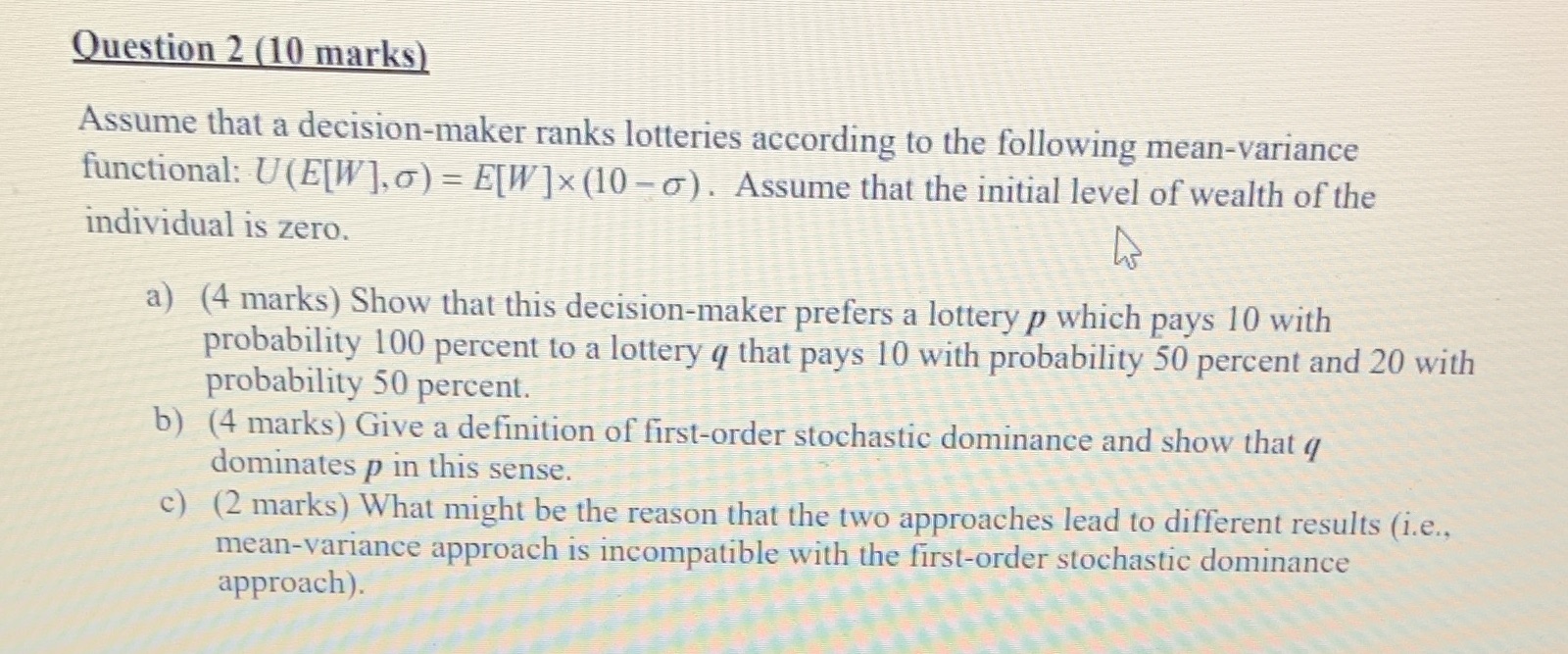Answered step by step
Verified Expert Solution
Question
1 Approved Answer
Question 2 (10 marks) Assume that a decision-maker ranks lotteries according to the following mean-variance functional: U(E[W], 0) = E[W] (10-). Assume that the

Question 2 (10 marks) Assume that a decision-maker ranks lotteries according to the following mean-variance functional: U(E[W], 0) = E[W] (10-). Assume that the initial level of wealth of the individual is zero. a) (4 marks) Show that this decision-maker prefers a lottery p which pays 10 with probability 100 percent to a lottery q that pays 10 with probability 50 percent and 20 with probability 50 percent. b) (4 marks) Give a definition of first-order stochastic dominance and show that q dominates p in this sense. c) (2 marks) What might be the reason that the two approaches lead to different results (i.e., mean-variance approach is incompatible with the first-order stochastic dominance approach).
Step by Step Solution
There are 3 Steps involved in it
Step: 1
a To compare the lotteries lets calculate the expected value and variance for each lottery Lottery p 100 chance of winning 10 EW 10 0 as there is no v...
Get Instant Access to Expert-Tailored Solutions
See step-by-step solutions with expert insights and AI powered tools for academic success
Step: 2

Step: 3

Ace Your Homework with AI
Get the answers you need in no time with our AI-driven, step-by-step assistance
Get Started


